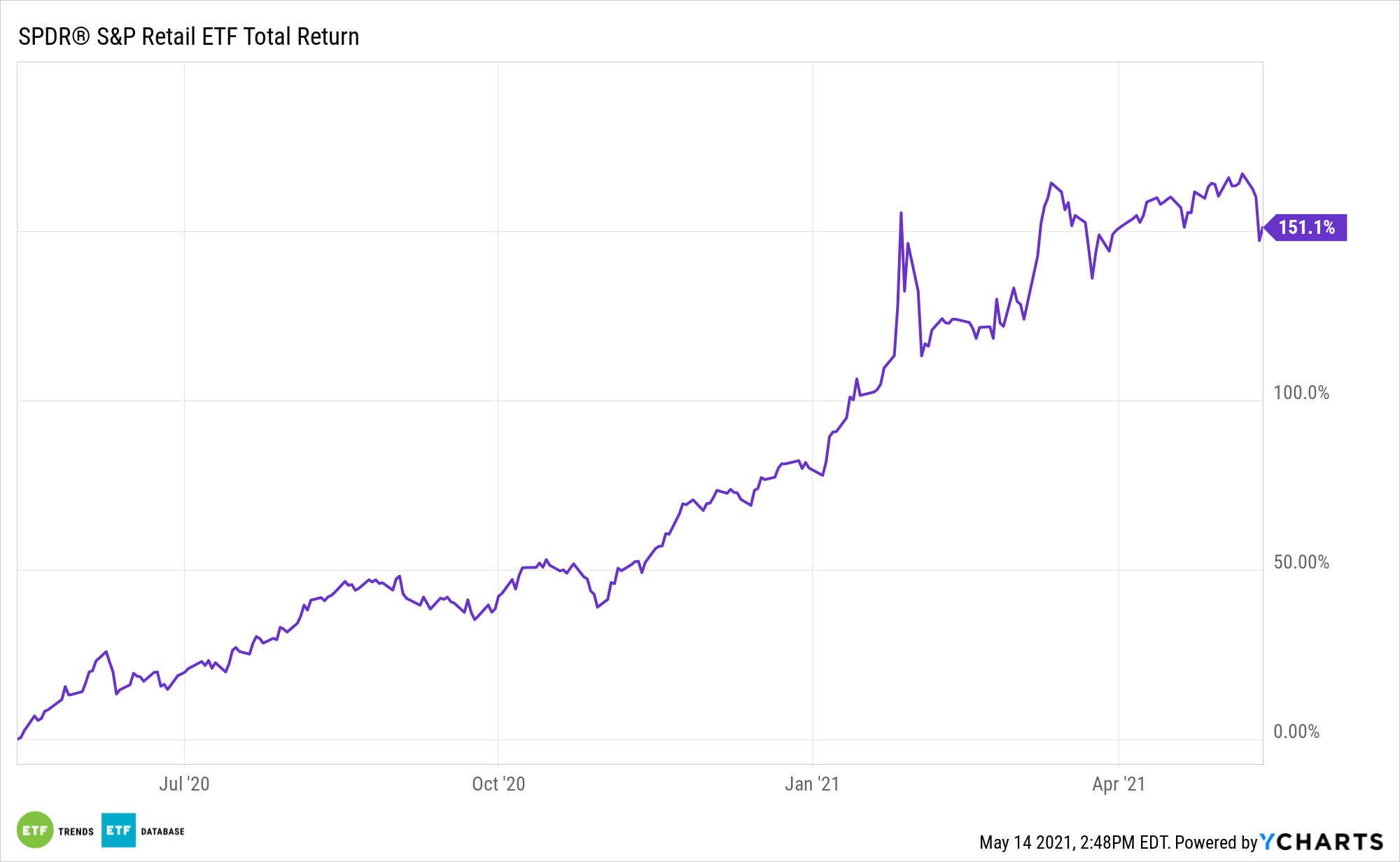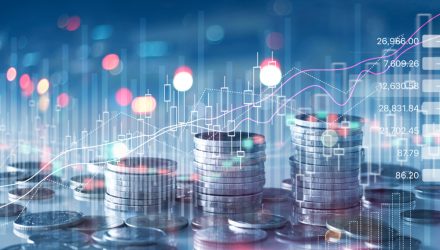Retail sector-specific exchange traded funds strengthened as traders looked beyond the unexpected stall in April retail sales to the potential rebound in the coming months.
The SPDR S&P Retail ETF (XRT), the largest retail sector-related ETF by assets, increased 4.1% on Friday.

The Commerce Department on Friday revealed retail sales remained unchanged in April, but sales in March were up 10.7%, the second-largest increase on record and an upward revision from the previously reported 9.7% increase, Reuters reports.
Investors, though, focused on the potential expansion ahead, with signs that Americans are beginning to shift spending from goods to services like restaurants and bars, as the Covid-19 vaccination rollout progresses.
“There will be momentum going into the second quarter for economic growth because sales were off the charts in March,” Chris Rupkey, chief economist at FWDBONDS, told Reuters.
Retail sales make up for the majority of the goods component in consumer spending, while services like healthcare, education, travel, and hotel accommodation making up the other portion.
Observers have pointed out that households have hoarded at least $2.3 trillion in excess savings over the coronavirus pandemic, which could further support spending this year.
“We are going to see more and more people switching a greater proportion of their spending away from ‘things’, which are picked up by retail sales, towards ‘experiences’ which are reflected in broader consumer spending,” James Knightley, chief international economist at ING, told Reuters.
Economists have maintained projections for double-digit growth in consumer spending over the second quarter. They have argued that even if retail sales do not recover much in the months ahead, spending on services could more than make up for it.
“Retail sales growth will be solid through the rest of this year,” Gus Faucher, chief economist at PNC Financial, told Reuters. “Consumers have billions of dollars of stimulus payments saved up, and will gradually spend those funds over the next couple of years.”
For more information on the markets, visit our current affairs category.

